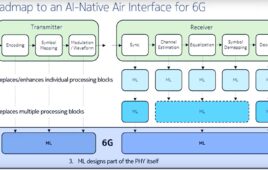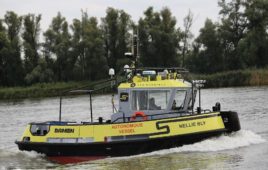OSLO, Norway, /PRNewswire/ — The 2011 Frost & Sullivan Europe New Product Innovation Award in Radar Sensors is presented to Novelda AS (Novelda) for its state-of-the-art, high precision Novelda Impulse Radar transceiver – NVA6000.
“The Novelda NVA6000 Impulse Radar transceiver is a cutting-edge radar transceiver that incorporates extremely high frame rate and accuracy, in addition to unique penetration capabilities,” remarks Frost & Sullivan Research Analyst V. Sankaranarayanan. “Integrated on a single chip, this radar transceiver transmits pulses of high bandwidth.”
Based on the Continuous Time Binary Valued (CTBV) design platform, this CMOS impulse radar transceiver successfully eliminates bottlenecks prevalent in conventional digital design-based processors. Unlike traditional processors, the NVA6000 Novelda Impulse Radar sensor does not involve the use of synchronous clock-based digital designs. This enables significantly lower power consumption, while accelerating the processing speed.
“The clock-less CTBV design saves the entire energy that is otherwise used for clock driving or distribution,” explains Sankaranarayanan. “In comparison, synchronous clock-based traditional digital technology consumes almost 50 per cent of the total power, as noted in the case of several conventional high-end processors.”
In comparison to traditional technology, the Novelda NVA6000 Impulse Radar transceiver offers several improvements and value added features. It effectively uses even extremely short microwave pulses, which makes it ideal for high-resolution ranging.
Its exceptionally short pulse time enables very high accuracy distance tracking and even detection of static objects. Its high sensitivity enables it to detect very weak signals, even amidst considerable noise.
“In addition, as it is integrated on a single chip, the Novelda Impulse Radar transceiver can be seamlessly integrated into small mobile devices,” adds Sankaranarayanan. “The ability to detect objects behind obstacles, coupled with increased speed and high sensitivity, not only makes it complementary and/or a substitute for existing technologies such as ultrasound, video and infrared sensors, but enables it to cater to new areas of application as well.”
The Novelda Impulse Radar transceiver successfully caters to sensor applications across a range of sectors including health monitoring (including stress and pulse monitoring), medical diagnosis (including heart beat monitoring and 3D RF-imaging), automotive and industrial (including distance and road obstacle detection), security surveillance (such as motion detection), and energy automation and defense.
“Unlike technologies that demand free visibility, Novelda NVA6000 Impulse Radar transceiver’s ability to detect objects behind obstacles, eliminates the need to clean lenses, thus ensuring cost savings for customers,” concludes Sankaranarayanan. “In addition, Novelda saves costs and time for developers by supplying development kits and software, and providing development support for the entire range of available chips.”
The New Product Innovation Award is presented to the company that has excelled in the following criteria: innovative element of the product, leverage leading-edge technologies in product, value-added features/benefits, increased customer ROI and customer acquisition/penetration potential.



